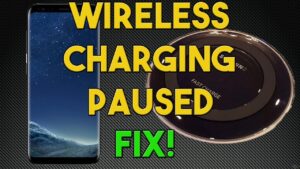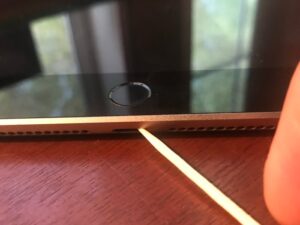How long does a trolling motor last on a battery? If you’re an angler who relies on a trolling motor for their fishing adventures, this question must have crossed your mind at some point. Don’t worry, we’ve got you covered! In this article, we’ll dive into the factors that affect the lifespan of a trolling motor on a battery and provide you with practical tips to maximize its usage. So, whether you’re planning a full day of fishing or just a few hours on the water, keep reading to ensure your trolling motor lasts as long as you need it to.
How Long Does a Trolling Motor Last on a Battery?
A trolling motor is an essential component for boating enthusiasts, especially for those who enjoy fishing. It provides quiet and efficient propulsion, allowing you to maneuver your boat without scaring away fish. However, one common concern among trolling motor users is how long it can last on a battery. In this article, we will explore the factors that influence the battery life of a trolling motor, tips to maximize its efficiency, and the different types of batteries available. So, let’s dive in and discover more about how long a trolling motor can last on a battery!
Factors Affecting Trolling Motor Battery Life
Several factors influence how long a trolling motor can last on a battery. Understanding these factors can help you optimize your battery usage and ensure an uninterrupted boating experience. Here are the key factors to consider:
- Trolling Motor Speed:
- Battery Capacity:
- Battery Type:
- Terrain and Conditions:
- Maintenance:
The speed at which you operate your trolling motor plays a significant role in determining its battery life. Running the motor at high speeds will consume more power and drain the battery faster. On the other hand, using lower speeds will extend the battery life.
The capacity of your battery, usually measured in ampere-hours (Ah), is crucial in determining how long your trolling motor can run before needing a recharge. Higher-capacity batteries can deliver more power and last longer. It is important to choose a battery with the appropriate capacity for your specific needs.
The type of battery you use can also affect its lifespan. There are typically three main types of batteries for trolling motors: lead-acid, lithium-ion, and AGM (absorbent glass mat). Each type has its own advantages and disadvantages, including different levels of energy efficiency and longevity.
The conditions in which you operate your trolling motor can impact its battery life. Factors such as wind, currents, waves, and water temperature can increase the resistance and require more power from the motor, ultimately draining the battery faster.
Proper maintenance of your trolling motor and battery is vital to ensure optimal performance and longer battery life. Regularly cleaning the motor, checking for any damaged components, and correctly storing the battery when not in use can help prolong its lifespan.
Tips to Maximize Trolling Motor Battery Efficiency
While the battery life of a trolling motor depends on various factors, there are some tips you can follow to maximize its efficiency and make the most out of your time on the water. Consider implementing these suggestions to prolong your battery’s runtime:
- Plan Your Trips:
- Use Lower Speeds:
- Avoid Constant Speed Changes:
- Minimize Wind Resistance:
- Reduce Excessive Load:
- Monitor Battery Voltage:
- Charge Properly:
- Carry Spare Batteries:
Before heading out, plan your trips by estimating the distance you need to cover and the time required. This way, you can calculate how much battery power you will need and ensure you have enough charge to complete your trip without any issues.
As mentioned earlier, running your trolling motor at lower speeds can significantly extend the battery life. Unless you need to traverse long distances quickly, opt for slower speeds to conserve power.
Constantly changing the speed of your trolling motor can drain the battery faster. Try to maintain a consistent speed whenever possible to minimize power consumption.
Wind can create resistance, forcing the trolling motor to work harder and consume more power. Position your boat to minimize the impact of wind on the motor, helping to conserve battery life.
Carrying excessive weight on your boat can strain the trolling motor, leading to increased power consumption. Remove any unnecessary items from your boat to reduce the load on the motor and extend your battery’s runtime.
Keep an eye on your battery’s voltage levels using a voltmeter or a battery monitor. This will help you gauge how much charge is left and prevent unexpected battery depletion while on the water.
Follow the manufacturer’s instructions on charging your battery to ensure proper and efficient charging. Overcharging or undercharging can negatively impact the battery’s lifespan and performance.
If you anticipate being on the water for an extended period, it may be a good idea to carry spare batteries. This way, you can easily replace a depleted battery and continue enjoying your time on the water.
Types of Trolling Motor Batteries
When it comes to choosing a battery for your trolling motor, you have a few options available. Each type of battery has its own advantages and considerations. Here are the three main types of batteries commonly used for trolling motors:
1. Lead-Acid Batteries:
Lead-acid batteries are the most common and economical option for trolling motors. They have been used for many years and offer decent performance. However, they are relatively heavy and require regular maintenance, including checking the water levels and ensuring proper charging.
2. Lithium-Ion Batteries:
Lithium-ion batteries are gaining popularity due to their higher energy density, longer lifespan, and lighter weight compared to lead-acid batteries. They are maintenance-free, provide consistent power output, and can recharge more quickly. However, they are more expensive upfront.
3. AGM (Absorbent Glass Mat) Batteries:
AGM batteries are a type of lead-acid battery that uses a specialized glass mat to absorb and immobilize the electrolyte. They are sealed, maintenance-free, and offer excellent deep-cycle capabilities. AGM batteries are generally more expensive than traditional lead-acid batteries but have longer lifespans and better resistance to vibrations.
In conclusion, the battery life of a trolling motor depends on various factors such as speed, battery capacity, battery type, operating conditions, and maintenance. By understanding these factors and following the tips mentioned above, you can optimize your trolling motor’s battery usage and enjoy longer excursions on the water. Additionally, choosing the right type of battery for your needs can further enhance your boating experience. Remember to consider the pros and cons of different battery types, such as lead-acid, lithium-ion, and AGM, before making a decision. With proper care and the right battery, your trolling motor will provide reliable and efficient service for many enjoyable boating adventures. Happy boating!
Frequently Asked Questions
How long does a trolling motor last on a battery?
The lifespan of a trolling motor on a battery can vary depending on several factors. Here are some frequently asked questions related to the duration of a trolling motor on a battery:
1. What determines how long a trolling motor will last on a battery?
The duration of a trolling motor on a battery is influenced by factors such as the battery capacity, the speed setting of the motor, the weight of the boat, and environmental conditions. Higher speed settings and heavier boats tend to drain the battery more quickly.
2. Can I estimate the runtime of a trolling motor on a battery?
Yes, you can estimate the runtime of a trolling motor by considering the ampere-hour (Ah) rating of the battery and the amp draw of the motor. Divide the battery’s Ah rating by the motor’s amp draw to get an estimate of the runtime in hours.
3. How long can a trolling motor run on a fully charged battery?
The runtime of a trolling motor on a fully charged battery depends on various factors and cannot be determined with absolute certainty. However, on an average-sized boat, a fully charged battery can last anywhere from 2 to 8 hours, depending on the speed setting and other factors.
4. Are there any tips for maximizing the battery life of a trolling motor?
Yes, there are several tips to maximize the battery life of a trolling motor. These include avoiding full-throttle operation, using lower speed settings when possible, minimizing the weight on the boat, keeping the battery terminals clean, and charging the battery properly after use.
5. Can I use multiple batteries to extend the runtime of a trolling motor?
Yes, using multiple batteries, known as battery banks, can extend the runtime of a trolling motor. By connecting batteries in parallel, you can increase the total capacity and therefore prolong the motor’s operating time before recharging is needed.
Final Thoughts
In conclusion, the lifespan of a trolling motor on a battery depends on a few factors. The size and power of the motor, the battery capacity, and the speed at which the motor is used all play a role in determining how long it will last. On average, a trolling motor can last anywhere from 3 to 8 hours on a single battery charge. However, it is important to note that this can vary significantly based on the variables mentioned. Therefore, if you are planning a fishing expedition or a day out on the water, it is recommended to have a backup battery or a charging option available. So, if you’re wondering how long does a trolling motor last on a battery, it ultimately depends on these factors and how you utilize it.


